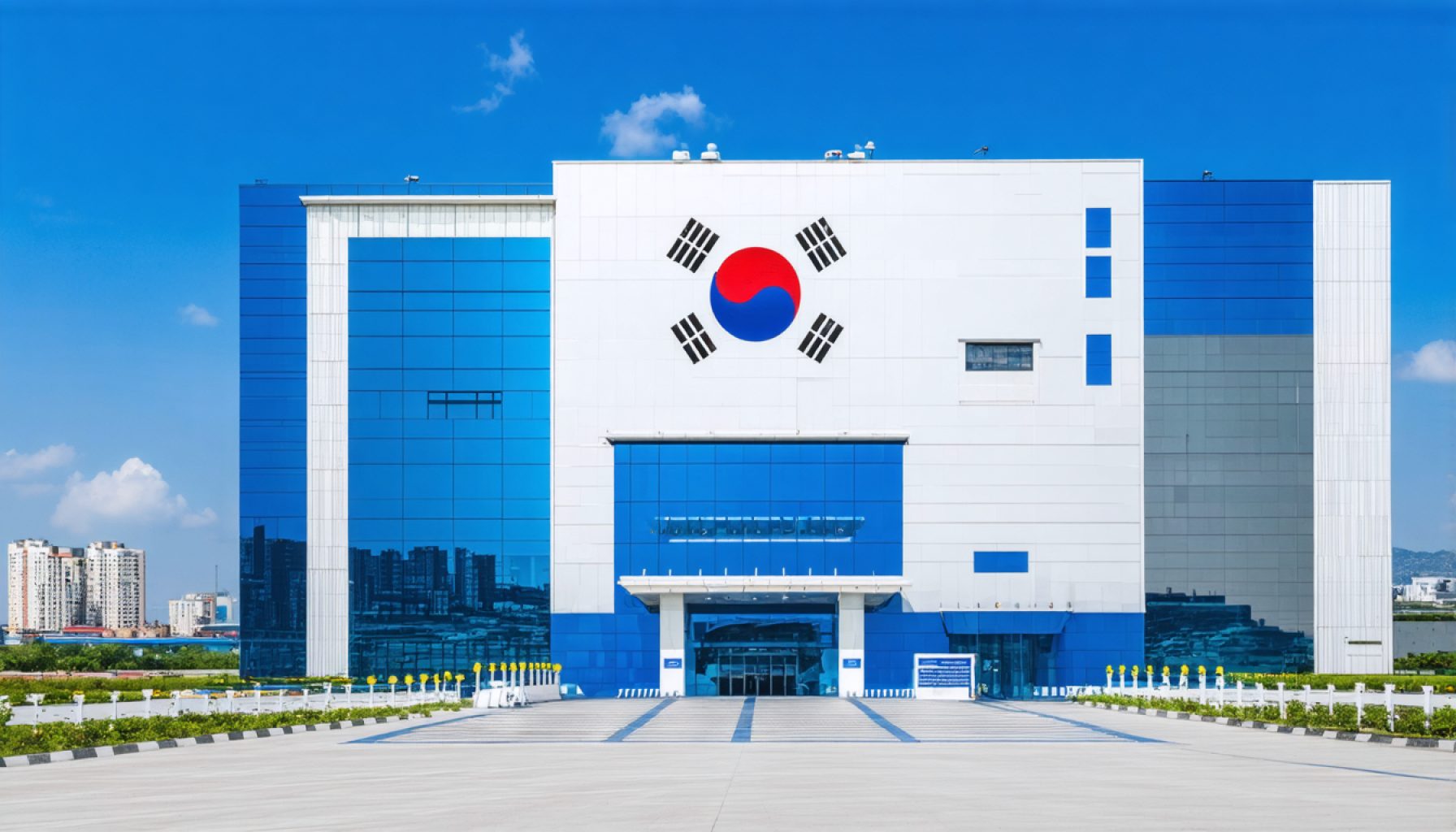- South Korea is advancing hydrogen power innovation by converting ammonia into a sustainable energy source, starting with a 1MW pilot project in Pohang and aiming for 40MW by 2029.
- The initiative is a collaboration between Amogy, GS Engineering & Construction, and HD Hyundai Infracore, combining ammonia cracking technology with hydrogen engine expertise.
- The project’s success could showcase a scalable model for clean energy, highlighting ammonia’s potential as a safe hydrogen carrier.
- By 2026, the pilot aims to prove ammonia-derived hydrogen as an alternative energy, supporting efforts to meet rising global energy demands and combat climate change.
- This venture positions South Korea as a leader in sustainable technology, promoting collaboration and innovation to create a cleaner future.
Nestled in the vibrant landscapes of North Gyeongsang Province, a new chapter in clean energy innovation is unfolding. South Korea is embarking on an ambitious journey to redefine the potential of hydrogen power by transforming ammonia into a promising green energy source. The goal: to demonstrate a cutting-edge hydrogen power generation system, starting with a potent 1MW pilot project and aiming to expand exponentially to 40MW by the end of the decade.
The bustling city of Pohang, known for its technological advancements and vibrant industrial scenes, will serve as the launchpad for this transformative initiative. In a pioneering collaboration, US-based firm Amogy is partnering with South Korea’s GS Engineering & Construction and HD Hyundai Infracore to bring this daring vision to life. With Amogy’s innovative ammonia cracking technology working in harmony with Hyundai’s robust hydrogen engine, the stage is set for a revolution in distributed energy systems.
Imagine a future where clean energy is not just a dream but a tangible reality. By 2026, South Korea aims to deploy this pilot system, demonstrating the viability of ammonia-derived hydrogen as a scalable alternative energy source. The robust infrastructure of Pohang provides an ideal testing ground, where the city’s existing expertise in engineering fuels the spirit of this groundbreaking endeavor.
As global energy demands soar and the urgency to mitigate climate change intensifies, the integration of ammonia cracking technology presents a beacon of hope. Ammonia, a compound composed of nitrogen and hydrogen, holds immense potential as a hydrogen carrier. Its ability to store and transport hydrogen safely is a game-changer, promising widespread adoption of hydrogen fuel across diverse sectors, from transportation to industrial applications.
Scaling this project to 40MW by 2029 could mark a watershed moment for South Korea and the world, showcasing a model for clean and efficient energy production that other nations could emulate. This bold undertaking underscores South Korea’s commitment to becoming a leader in sustainable technology and its unwavering pursuit of a cleaner, greener future for all.
In a world where energy solutions can often seem out of reach, this venture illuminates the path forward—where technological prowess meets sustainable aspirations. The takeaway is clear: by harnessing the power of collaboration and innovation, South Korea is not just envisioning the future of energy; it is creating it.
Revolutionizing Clean Energy: South Korea’s Hydrogen Power Innovation
Exploring the Potential of Ammonia as a Hydrogen Carrier
South Korea’s innovative approach, outlined in the vibrant landscapes of North Gyeongsang Province, leverages ammonia as a promising hydrogen carrier to redefine hydrogen power generation. Ammonia’s potential to safely store and transport hydrogen is pivotal in the journey to achieving a cleaner energy future.
Understanding the Technology
Amogy’s ammonia cracking technology enables the efficient conversion of ammonia into hydrogen, which can then be used in Hyundai’s hydrogen engines. This collaboration sets the stage for a significant leap in ammonia-derived hydrogen power.
How This Project Works
1. Ammonia Cracking Process: Amogy’s technology breaks down ammonia molecules into nitrogen and hydrogen, the latter of which is a zero-emission fuel.
2. Hydrogen Engine Utilization: The extracted hydrogen powers Hyundai’s robust engines, showcasing the practical applications of this sustainable fuel alternative.
3. Energy Distribution: As a pilot, the energy generated will be integrated into local grids, with the potential to expand into broader applications.
Real-World Use Cases
– Transportation: Hydrogen fuel cells can power public transportation, potentially reducing urban carbon emissions significantly.
– Industrial Applications: Factories and large-scale industrial operations could use hydrogen as a clean fuel source, reducing reliance on fossil fuels.
Market Forecasts and Industry Trends
The global hydrogen fuel market is expected to grow significantly, with estimates suggesting it could reach $11 trillion by 2050. South Korea’s foray into hydrogen technology aligns with this trend, positioning it as a leader in the Asian clean energy sector. Countries around the world are beginning to follow South Korea’s example, exploring the viability of ammonia as a hydrogen carrier.
Advantages and Challenges
Pros:
– Scalability: The potential to expand from 1MW to 40MW indicates a scalable solution for diverse energy needs.
– Sustainability: Hydrogen power reduces carbon emissions, aligning with global sustainability goals.
Cons:
– Economic Costs: The initial investment and infrastructure costs are high.
– Ammonia Production: Current ammonia production processes are energy-intensive, which could offset some of the clean energy benefits.
Actionable Tips
– Invest in Research: To fully realize ammonia’s potential, invest in research for more efficient production and cracking techniques.
– Policy Support: Governments should support pilot projects through subsidies and favorable regulatory frameworks.
– Public Awareness: Educate the public on the benefits of hydrogen energy to boost adoption rates.
Final Thoughts
As South Korea continues to spearhead ammonia-based hydrogen power, the rest of the world watches closely. By leveraging cutting-edge technology and strategic partnerships, South Korea is redefining what’s possible in the clean energy realm.
For more insights into energy innovations or to learn about similar projects, visit energy.gov and Clean Energy Council. These platforms offer additional resources and updates on the latest in clean energy technologies.
